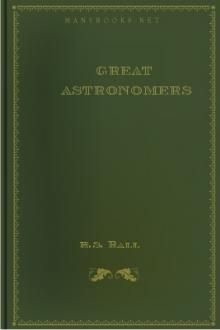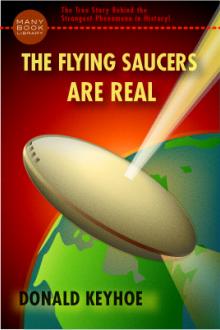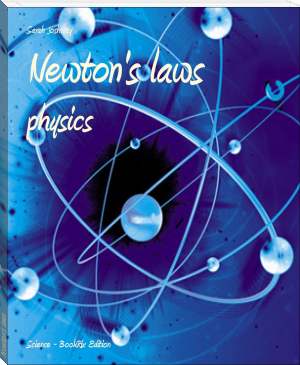Great Astronomers by Robert Stawell Ball (uplifting novels .txt) 📕

- Author: Robert Stawell Ball
- Performer: -
Book online «Great Astronomers by Robert Stawell Ball (uplifting novels .txt) 📕». Author Robert Stawell Ball
obtained with the greatest care, and purified as far as possible
from the errors by which they may be affected form, as it were,
the raw material on which the mathematician exercises his skill.
It is for him to elicit from the observed places the true laws
which govern the movements of the heavenly bodies. Here is indeed
a task in which the highest powers of the human
intellect may be worthily employed.
Among those who have laboured with the greatest success in the
interpretation of the observations made with instruments of
precision, Le Verrier holds a highly honoured place. To him it
has been given to provide a superb illustration of the success
with which the mind of man can penetrate the deep things of
Nature.
The illustrious Frenchman, Urban Jean Joseph Le Verrier, was
born on the 11th March, 1811, at St. Lo, in the department of
Manche. He received his education in that famous school for
education in the higher branches of science, the Ecole
Polytechnique, and acquired there considerable fame as a
mathematician. On leaving the school Le Verrier at first purposed
to devote himself to the public service, in the department of
civil engineering; and it is worthy of note that his earliest
scientific work was not in those mathematical researches in which
he was ultimately to become so famous. His duties in the
engineering department involved practical chemical research in the
laboratory. In this he seems to have become very expert, and
probably fame as a chemist would have been thus attained, had not
destiny led him into another direction. As it was, he did engage
in some original chemical research. His first contributions to
science were the fruits of his laboratory work; one of his papers
was on the combination of phosphorus and hydrogen, and another on
the combination of phosphorus and oxygen.
His mathematical labours at the Ecole Polytechnique had, however,
revealed to Le Verrier that he was endowed with the powers
requisite for dealing with the subtlest instruments
of mathematical analysis. When he was twenty-eight years old,
his first great astronomical investigation was brought forth.
It will be necessary to enter into some explanation as to the
nature of this, inasmuch as it was the commencement of the life-work which he was to pursue.
If but a single planet revolved around the sun, then the orbit
of that planet would be an ellipse, and the shape and size, as
well as the position of the ellipse, would never alter. One
revolution after another would be traced out, exactly in the same
manner, in compliance with the force continuously exerted by the
sun. Suppose, however, that a second planet be introduced into
the system. The sun will exert its attraction on this second
planet also, and it will likewise describe an orbit round the
central globe. We can, however, no longer assert that the orbit
in which either of the planets moves remains exactly an ellipse.
We may, indeed, assume that the mass of the sun is enormously
greater than that of either of the planets. In this case the
attraction of the sun is a force of such preponderating magnitude,
that the actual path of each planet remains nearly the same as if
the other planet were absent. But it is impossible for the orbit
of each planet not to be affected in some degree by the attraction
of the other planet. The general law of nature asserts that every
body in space attracts every other body. So long as there is only
a single planet, it is the single attraction between the sun and
that planet which is the sole controlling principle of the
movement, and in consequence of it the ellipse is described. But
when a second planet is introduced, each of the two bodies is not
only subject to the attraction of the sun, but each one of the
planets attracts the other. It is true that this mutual
attraction is but small, but, nevertheless, it produces some
effect. It “disturbs,” as the astronomer says, the elliptic
orbit which would otherwise have been pursued. Hence it follows
that in the actual planetary system where there are several
planets disturbing each other, it is not true to say that the
orbits are absolutely elliptic.
At the same time in any single revolution a planet may for most
practical purposes be said to be actually moving in an ellipse.
As, however, time goes on, the ellipse gradually varies. It
alters its shape, it alters its plane, and it alters its position
in that plane. If, therefore, we want to study the movements of
the planets, when great intervals of time are concerned, it is
necessary to have the means of learning the nature of the movement
of the orbit in consequence of the disturbances it has
experienced.
We may illustrate the matter by supposing the planet to be
running like a railway engine on a track which has been laid in
a long elliptic path. We may suppose that while the planet is
coursing along, the shape of the track is gradually altering.
But this alteration may be so slow, that it does not
appreciably affect the movement of the engine in a single
revolution. We can also suppose that the plane in which the
rails have been laid has a slow oscillation in level, and that
the whole orbit is with more or less uniformity moved slowly
about in the plane.
In short periods of time the changes in the shapes and positions
of the planetary orbits, in consequence of their mutual
attractions, are of no great consequence. When, however, we bring
thousands of years into consideration, then the displacements of
the planetary orbits attain considerable dimensions, and have, in
fact, produced a profound effect on the system.
It is of the utmost interest to investigate the extent to
which one planet can affect another in virtue of their mutual
attractions. Such investigations demand the exercise of the
highest mathematical gifts. But not alone is intellectual
ability necessary for success in such inquiries. It must be
united with a patient capacity for calculations of an arduous
type, protracted, as they frequently have to be, through many
years of labour. Le Verrier soon found in these profound
inquiries adequate scope for the exercise of his peculiar
gifts. His first important astronomical publication contained
an investigation of the changes which the orbits of several of
the planets, including the earth, have undergone in times past,
and which they will undergo in times to come.
As an illustration of these researches, we may take the case of
the planet in which we are, of course, especially
interested, namely, the earth, and we can investigate the
changes which, in the lapse of time, the earth’s orbit has
undergone, in consequence of the disturbance to which it has
been subjected by the other planets. In a century, or even in
a thousand years, there is but little recognisable difference
in the shape of the track pursued by the earth. Vast periods
of time are required for the development of the large
consequences of planetary perturbation. Le Verrier has,
however, given us the particulars of what the earth’s journey
through space has been at intervals of 20,000 years
back from the present date. His furthest calculation throws
our glance back to the state of the earth’s track 100,000
years ago, while, with a bound forward, he shows us what the
earth’s orbit is to be in the future, at successive intervals
of 20,000 years, till a date is reached which is 100,000
years in advance Of A.D. 1800.
The talent which these researches displayed brought Le Verrier
into notice. At that time the Paris Observatory was presided
over by Arago, a SAVANT who occupies a distinguished position in
French scientific annals. Arago at once perceived that
Le Verrier was just the man who possessed the qualifications
suitable for undertaking a problem of great importance and
difficulty that had begun to force itself on the attention of
astronomers. What this great problem was, and how astonishing
was the solution it received, must now be considered.
Ever since Herschel brought himself into fame by his superb
discovery of the great planet Uranus, the movements of this new
addition to the solar system were scrutinized with care and
attention. The position of Uranus was thus accurately
determined from time to time. At length, when sufficient
observations of this remote planet had been brought together,
the route which the newly-discovered body pursued through the
heavens was ascertained by those calculations with which
astronomers are familiar. It happens, however, that Uranus
possesses a superficial resemblance to a star. Indeed the
resemblance is so often deceptive that long ere its detection as
a planet by Herschel, it had been observed time after time by
skilful astronomers, who little thought that the star-like point
at which they looked was anything but a star. From these early
observations it was possible to determine the track of Uranus, and
it was found that the great planet takes a period of no less than
eighty-four years to accomplish a circuit. Calculations were made
of the shape of the orbit in which it revolved before its
discovery by Herschel, and these were compared with the orbit
which observations showed the same body to pursue in those later
years when its planetary character was known. It could not, of
course, be expected that the orbit should remain unaltered; the
fact that the great planets Jupiter and Saturn revolve in the
vicinity of Uranus must necessarily imply that the orbit of the
latter undergoes considerable changes. When, however, due
allowance has been made for whatever influence the attraction of
Jupiter and Saturn, and we may add of the earth and all the other
Planets, could possibly produce, the movements of Uranus were
still inexplicable. It was perfectly obvious that there must be
some other influence at work besides that which could be
attributed to the planets already known.
Astronomers could only recognise one solution of such a
difficulty. It was impossible to doubt that there must be some
other planet in addition to the bodies at that time known, and
that the perturbations of Uranus hitherto unaccounted for, were
due to the disturbances caused by the action of this unknown
planet. Arago urged Le Verrier to undertake the great problem of
searching for this body, whose theoretical existence seemed
demonstrated. But the conditions of the search were such that it
must needs be conducted on principles wholly different from any
search which had ever before been undertaken for a celestial
object. For this was not a case in which mere survey with a
telescope might be expected to lead to the discovery.
Certain facts might be immediately presumed with reference to
the unknown object. There could be no doubt that the unknown
disturber of Uranus must be a large body with a mass far exceeding
that of the earth. It was certain, however, that it must be so
distant that it could only appear from our point of view as a very
small object. Uranus itself lay beyond the range, or almost
beyond the range, of unassisted vision. It could be shown that
the planet by which the disturbance was produced revolved in an
orbit which must lie outside that of Uranus. It seemed thus
certain that the planet could not be a body visible to the unaided
eye. Indeed, had it been at all conspicuous its planetary
character would doubtless have been detected ages ago. The
unknown body must therefore be a planet which would have to be
sought for by telescopic aid.
There is, of course, a profound physical difference between a
planet and a star, for the star is a luminous sun, and the planet
is merely a dark body, rendered visible





Comments (0)